Modern Turkey is a whole bouquet of ancient civilizations, peoples and cultures that existed on its territory many centuries ago. All of them in one way or another left behind a legacy. Some less, some more, and now I want to tell you about one of the most striking monuments of culture and archaeology – the ancient city of Hierapolis.
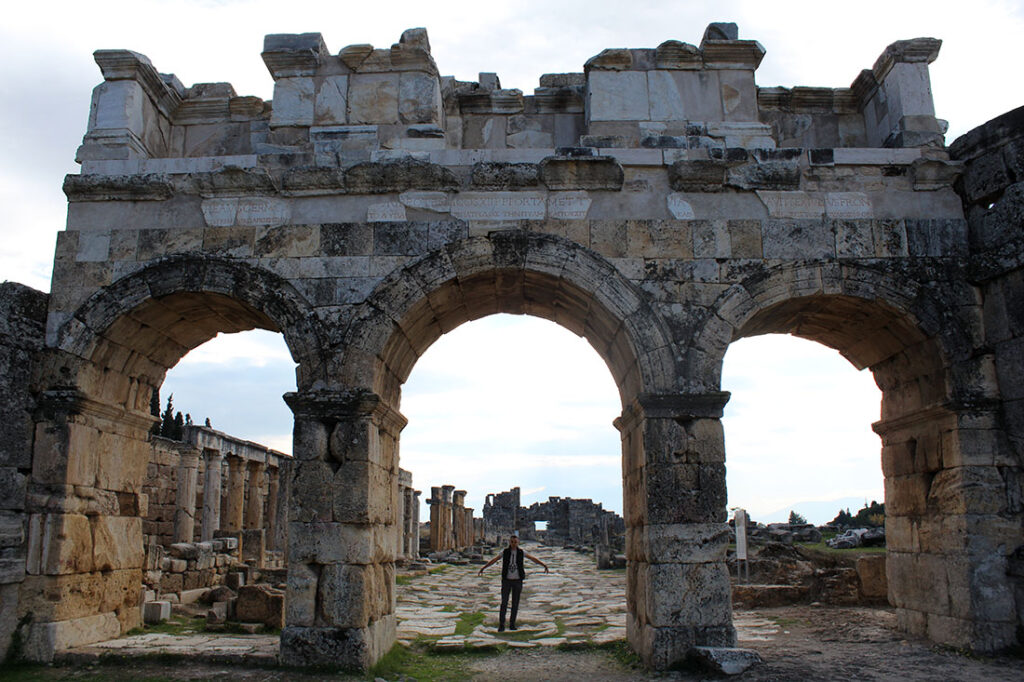
History of Hierapolis
The ruins of Hierapolis are located 18 kilometers from the big city of Denizli. The center of the province of the same name and the textile center of the region. Near the remains of the ancient city there is another attraction in Turkey – Pamukkale travertines (right on the Cotton Mountain).
In fact, the travertines and Hierapolis are located on the same plateau and are part of a large park where hundreds of thousands of tourists come every year.
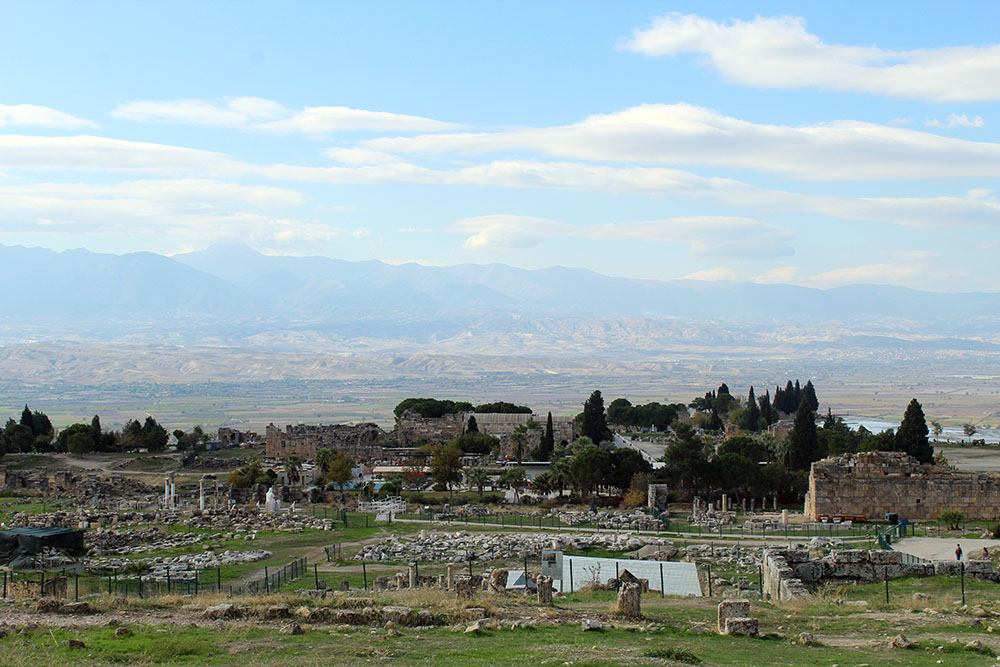
Hierapolis or Hierapolis, Hierapolis, means “Holy City” from the ancient Greek. The first settlements here appeared in the II millennium BC, and as a city this place became in 190, when the king of Pergamum founded a real city here.
Hierapolis was destroyed by earthquakes several times and always rebuilt. It passed under the control of the ancient kingdoms of Asia Minor until it finally became the territory of the Roman Empire.
It was under Roman rule that Hierapolis would become a resort for the entire nobility.
Not surprisingly, because the beauty of Cotton Mountain was already there, and about the healing springs then also knew.
After the fall of Rome, the city would become Byzantine, then Turkish, and would finally be destroyed by an earthquake in 1354. After that, the locals would not rebuild it, but simply leave it.
It will be talked about again at the end of the XIX century, when excavations will begin here. In 100 years many secrets will be revealed hiding under the ground. Hierapolis will get a real second life in the mid-2000s, when the Turkish government is seriously engaged in the cultural heritage.
Antique Hierapolis
In ancient times, Hierapolis was a famous cultural and religious center. In A.D. 90, Philip, one of the 12 apostles, was martyred here. He was crucified head down on a cross. And Constantine the Great would make the city the center of the Bishopric.
Overall, the metropolis grew and prospered because of its close proximity to the trade route and its recognition as a recreational center for the nobility. The prosperity is further evidenced by magnificent buildings, such as the 12,000-seat amphitheatre. It had no equal in the area.
And then one day the city received a blow from which it could no longer depart. It was already withering away, and when Hierapolis was destroyed by another earthquake – it was not rebuilt. The inhabitants simply left.
What to see in Hierapolis? Walking in Hierapolis
The excavation of Hierapolis began at the end of the 19th century. This process went on for many decades and continues to this day. It is now a huge “Archaeological Complex of Hierapolis” (Pamukkale (Hierapolis) Örenyeri) under the open sky in the Büyük Menderes Valley.
The complex is ancient ruins of varying degrees of preservation. Somewhere you can see a pile of stones, or foundations, and somewhere restored ancient structures. Some of them you can safely enter, climb into, and some of them are closed with tape – it is forbidden to enter such premises.
If you stroll leisurely through Hierapolis, you will see the majestic amphitheater.
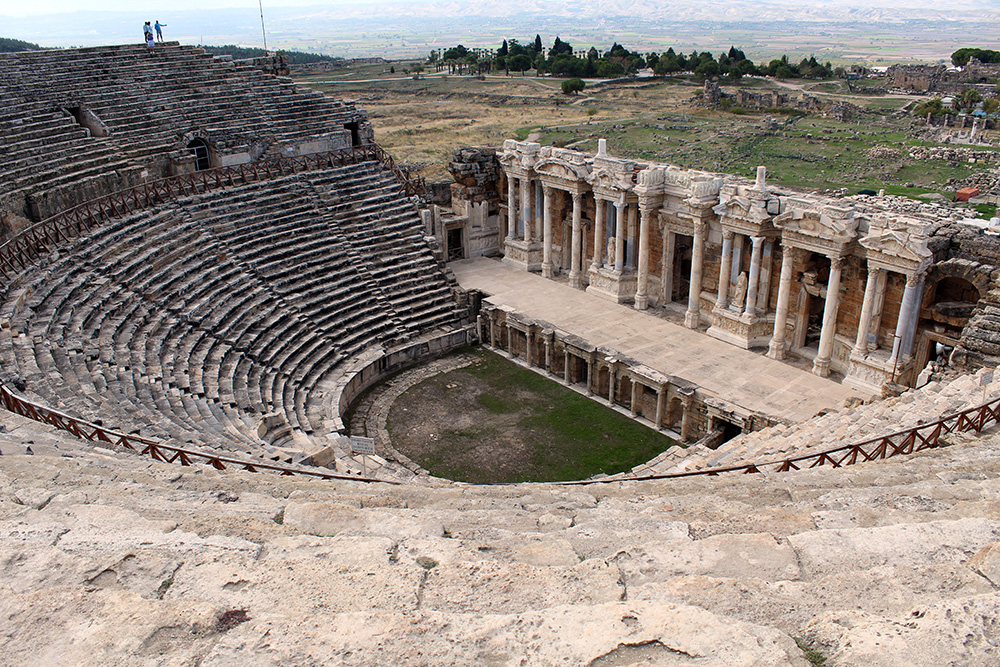
It was the largest theater in the county at the time.
The Hierapolis Amphitheater began to be restored in the 1960s and took 40 years to complete. It was assembled literally by the stones, the sculptures of Apollo were staged (some of them have survived very well, and some have not). In the amphitheater everything is reproduced to the smallest detail – there are seats for the audience, a stage at a height of 3 meters, rooms for the actors behind it.
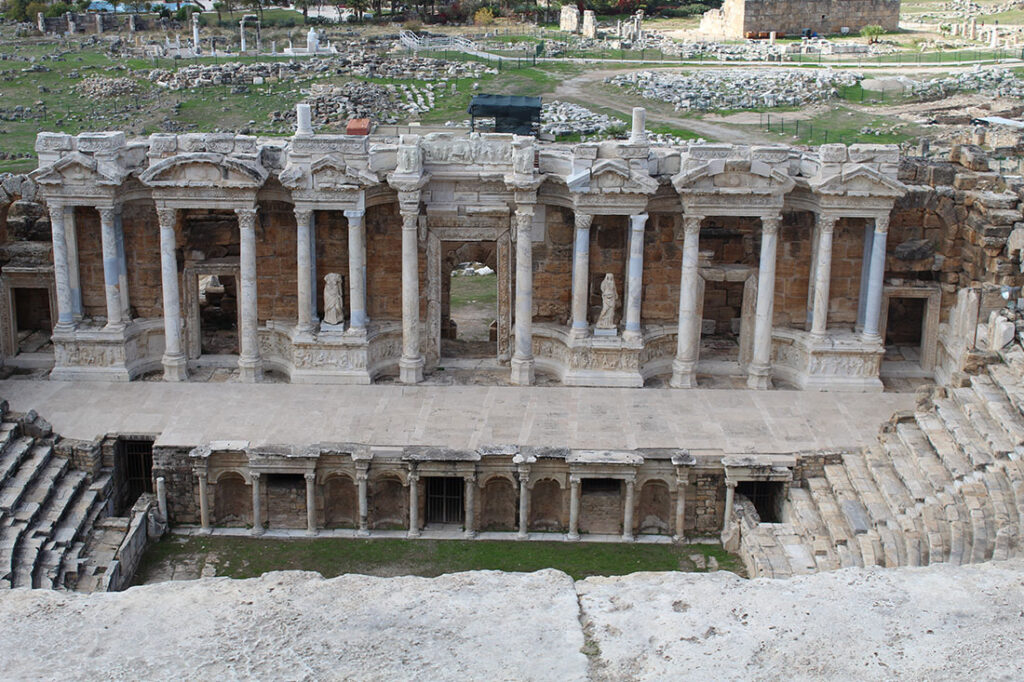
If it is on the very last row – it offers a good view of the ruins of the city and far to the horizon – where the modern city of Pamukkale and Denizli is located.
A road leads up to the theater, and if you go down it, you come to the main street of Hierapolis. It is made of stone. The street is 1 km long and 14 meters wide. On the edge of the building, there is a restored public toilet. In those days it was an important structure not only for hygiene, but also for public communication – business matters were often solved here.
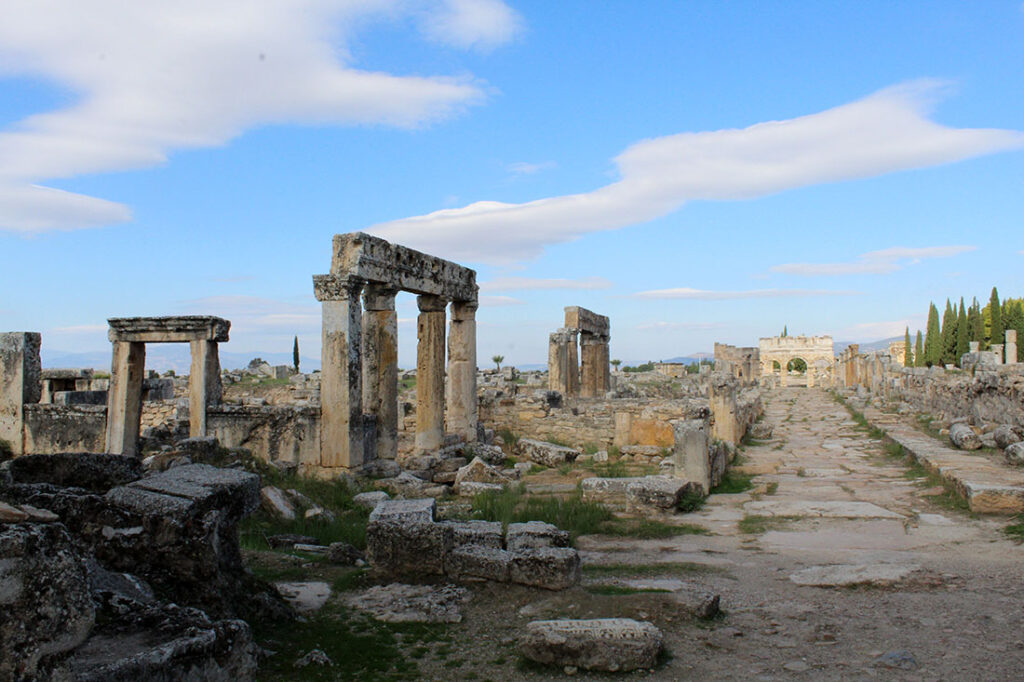
This street ends with the Arch of Domitian and a gate. There is also a gatehouse (this must have been where the guards sat).
On the left, if you go out the gate, the agora is the market place. It is poorly preserved and is probably only being restored. here The large granite columns are impressive. On the largest of them stood a statue of Mercury and Pluton, the god of trade.
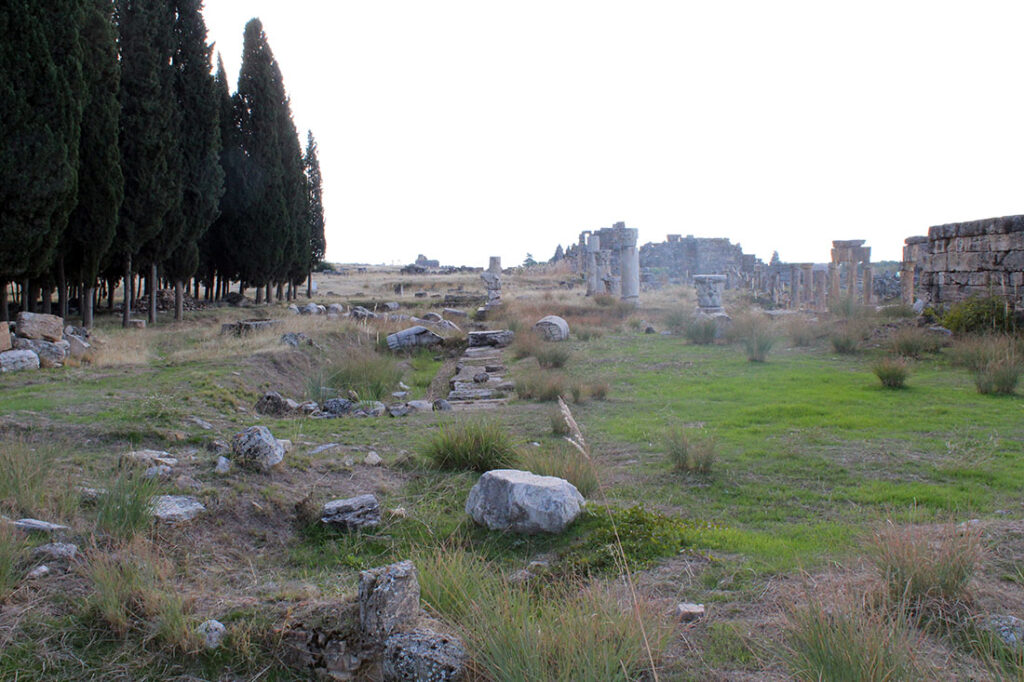
If we walk from the city gate to the west, we pass the gymnasium where ancient athletes trained. It is well preserved.
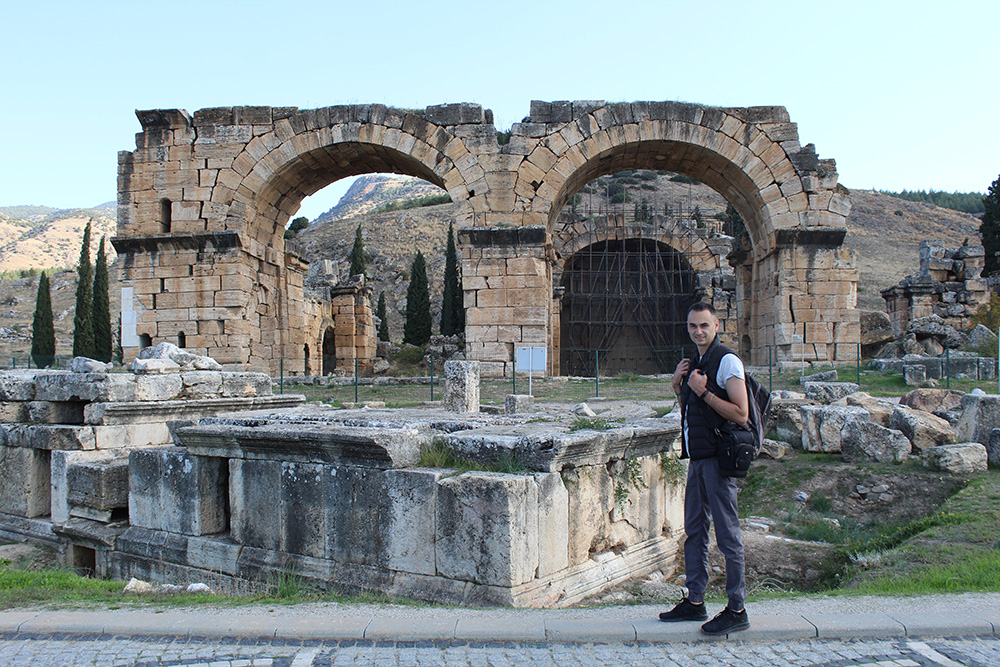
And right behind them is a unique place. This is the largest well-preserved cemetery of antiquity – the necropolis. There are many graves and crypts. They are chaotically arranged, but many of them are in good condition (the dead are long gone here).
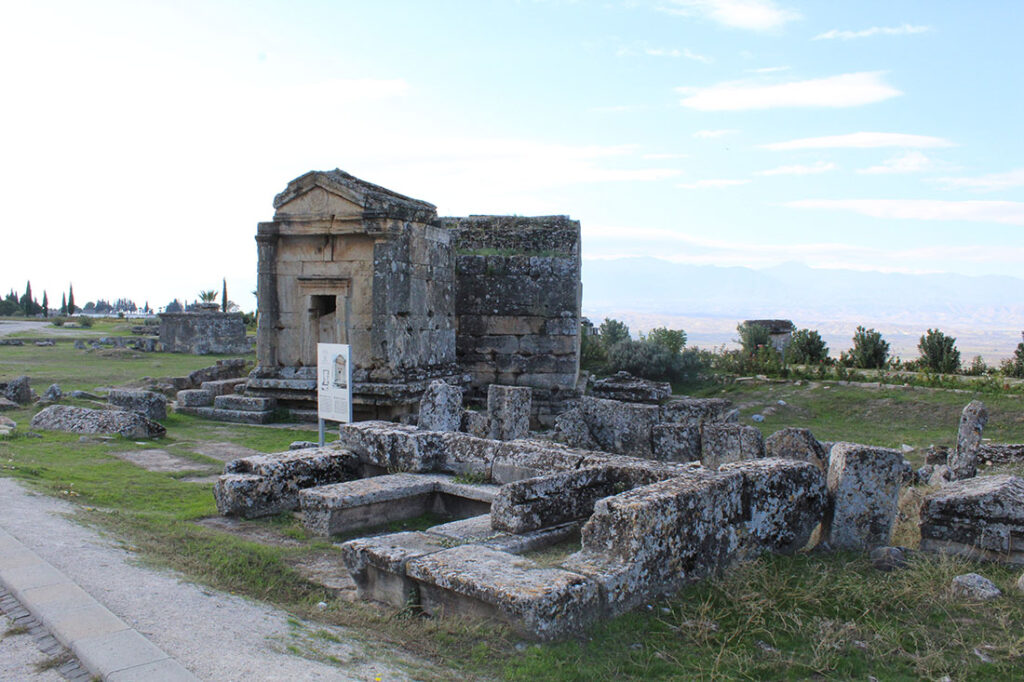
There is information that the necropolis of Hierapolis is the largest cemetery of the Roman Empire. Its length is 2 km.
There are still residential neighborhoods in the city. But they are nothing but ruins. Apparently, the private sector is of little value, so it is not being restored as quickly as the main buildings – the agora, the amphitheater, the temples, the statues.
The ruins of the Martyrium of Philip are preserved. This is the place where the saint was buried after his murder. The temples of Apollo and Pluto (the entrance to the ruins of this temple is closed).
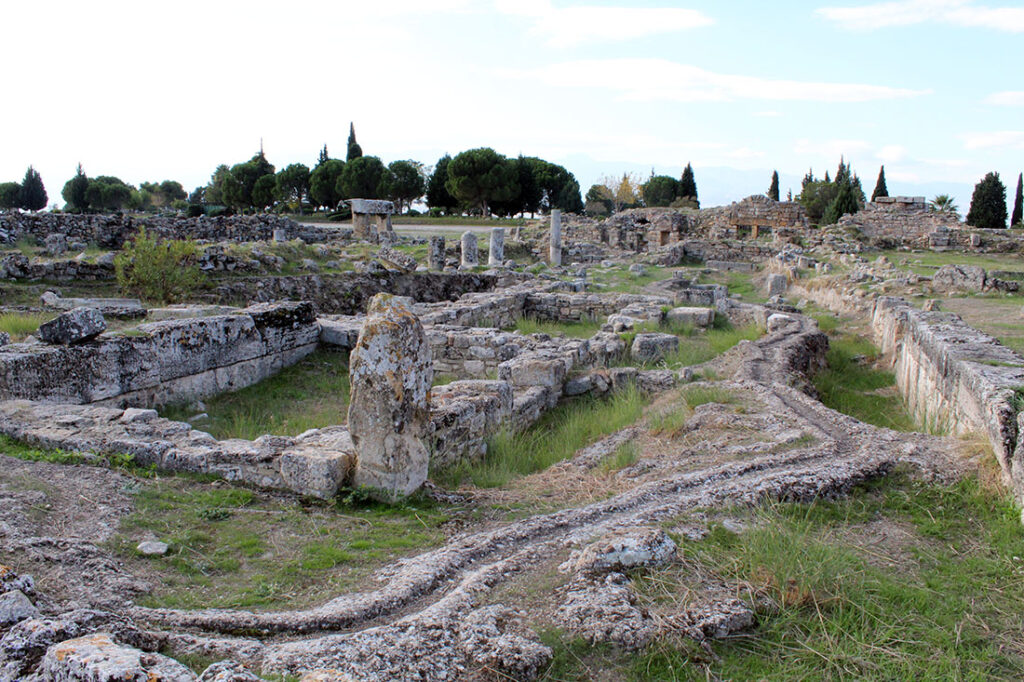
There is the “Archaeological Museum of Hierapolis”. Until 2022 there was a paid admission, but now it is included in the price of the ticket to the complex.
At the entrance to the complex are the ancient baths – thermae. They were well reconstructed and it was because of the natural springs, which according to legends had healing properties, that the city became famous in the empire. People came here not only to rest and enjoy the fascinating views of travertine, but also to heal their health.
The tour guide told an interesting story. In the 1990s, when Turkey was an economically weak state and cared little about heritage, small modern hotels were built right on the mountain among the ruins. In the early 2000s they were demolished and now only foundations – tiled floors – remain of them. Such infrastructure damaged the monument, especially the tourists walking uncontrollably among the ruins.
The main attractions of Hierapolis:
- Amphitheater (Roma Antik Tiyatro);
- Greek Theater (Hellenistik Antik Tiyatro);
- Gate (Frontinus Kapısı);
- Northern Gate (Kuzey Bizans Kapısı);
- Arch of Domitian, an ancient toilet (Latrina);
- Temple of Apollo (Appolon Tapınağı);
- Nympheus Fountain (Anıtsal Çeşme);
- Gymnasium (Gymnasion);
- Gymnasion Agora (Gymnasion Agorası);
- Byzantine Church (Bizans Kilise);
- Basilica of St. Philip (Aziz Philip Kilise) and the tomb of St. Philip;
- Great Byzantine Basilica (Katedral Kilise);
- Roman Baths;
- Southern Baths (Güney Büyük Hamamı);
- Archaeological Museum (Hierapolis Örenyeri Müzesi);
- The street with columns (Frontinus Caddesi);
- Domitian Street (Domitianos Caddesi);
- Northern Baths (Kuzey Büyük Hamamı);
- Southern Gate (Güney Kapısı);
- Trade Agora (Ticaret Agorası);
- Defensive City Walls (Ortaçağ Sur Davarı).
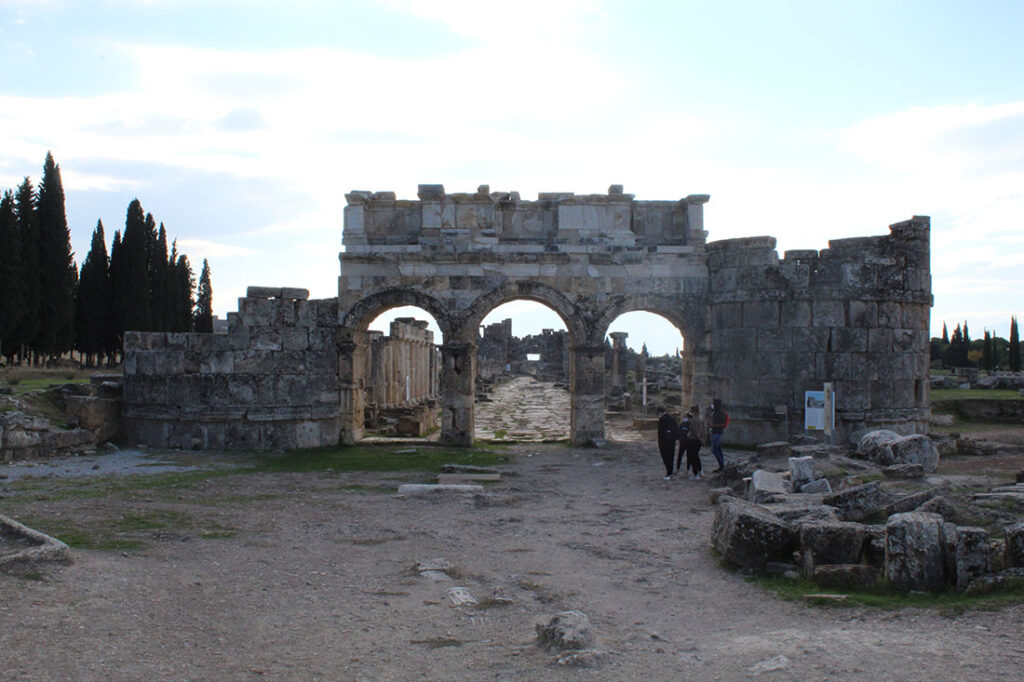
How much does it cost to enter the territory of Hierapolis and what else is interesting here
Admission to the park is 200 Turkish liras. Children under the age of eight can pass for free. This price includes a visit to the ruins of the ancient city and travertine. There is Cleopatra Pool with healing water on the territory – it is paid. The cost is 100 lira for adults. For children under 6 years – free of charge.
If you take a tour guide, it will be more expensive. However, without it may not be as interesting – because the man will tell interesting details of the life of the ancient city, make it fascinating and emotional.
Attractions in the Hierapolis area
Not far from Hierapolis there are many different interesting places. The closest one is the travertines of Pamukkale, or Cotton Mountain. Quite close are the ruins of the ancient city of Ladiokea. This city as a whole is worse preserved, but there is a beautiful temple of Apollo. The descendants of this city are the founders of modern Denizli.
Lake Salda is located 30 km southeast of Hierapolis. It is a big resort not only of local importance. However, tourists are brought here as well. The main thing is to come in summer, when there are no strong winds and the water is warm.
Lake Salda is very large, salty and medicinal. There is no vegetation and aquatic life, but the snow-white beaches and islets.
Between Pamukkale and Antalya are the famous lavender fields. The guide can tell you a lot of interesting things about this area and grow here half of the world’s consumption of lavender and roses. This place is worth a separate visit.
How to get to Hierapolis
If you vacation in Antalya, Alanya, Kemer, Fethiye, Marmaris, Izmir – excursions are organized from these cities. Comfortable buses, snacks on the way are guaranteed along with tour guides. It will cost you $70-120, but it is worth it, because it is not a long way and the organizers will take care of everything.
You can take public transport or a rented car. Both are very well developed and accessible in Turkey.
On the map, Hierapolis is located here – 37.9240558, 29.1210187.

